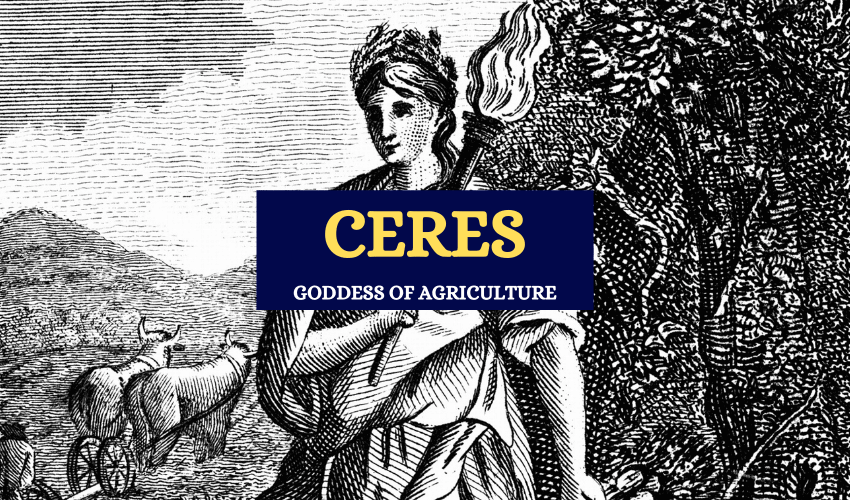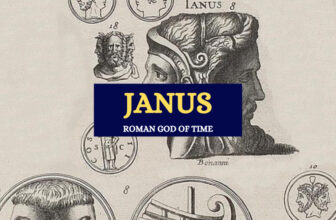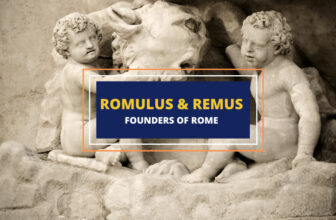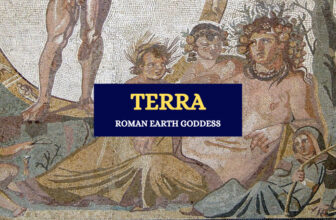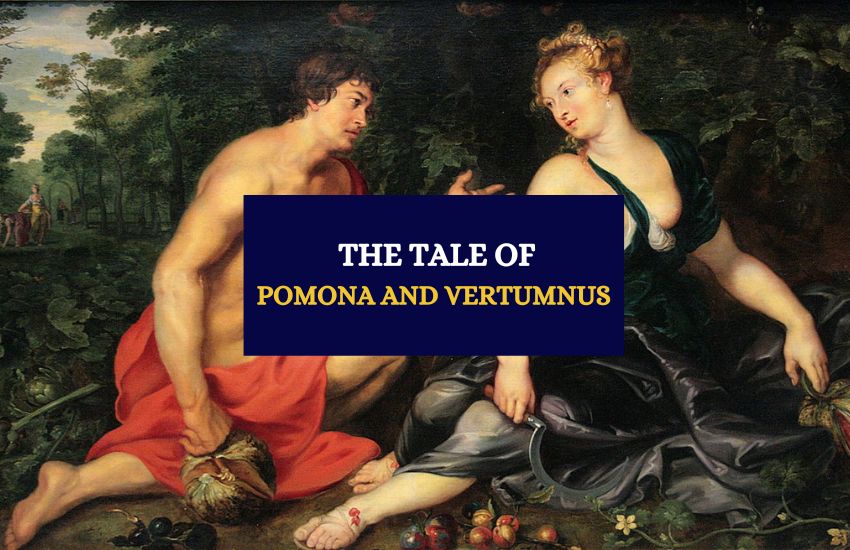
Table of Contents
Roman mythology is filled with fascinating stories of gods and goddesses, and the tale of Pomona and Vertumnus is no exception. These two deities are often overlooked in favor of more popular figures such as Jupiter or Venus, but their story is one of love, persistence, and the power of transformation.
Pomona is the goddess of fruit trees, while Vertumnus is the god of change and gardens, and their union is an unlikely but heartwarming one. In this blog, we’ll explore the story of Pomona and Vertumnus and what it represents in Roman mythology.
Who Was Pomona?
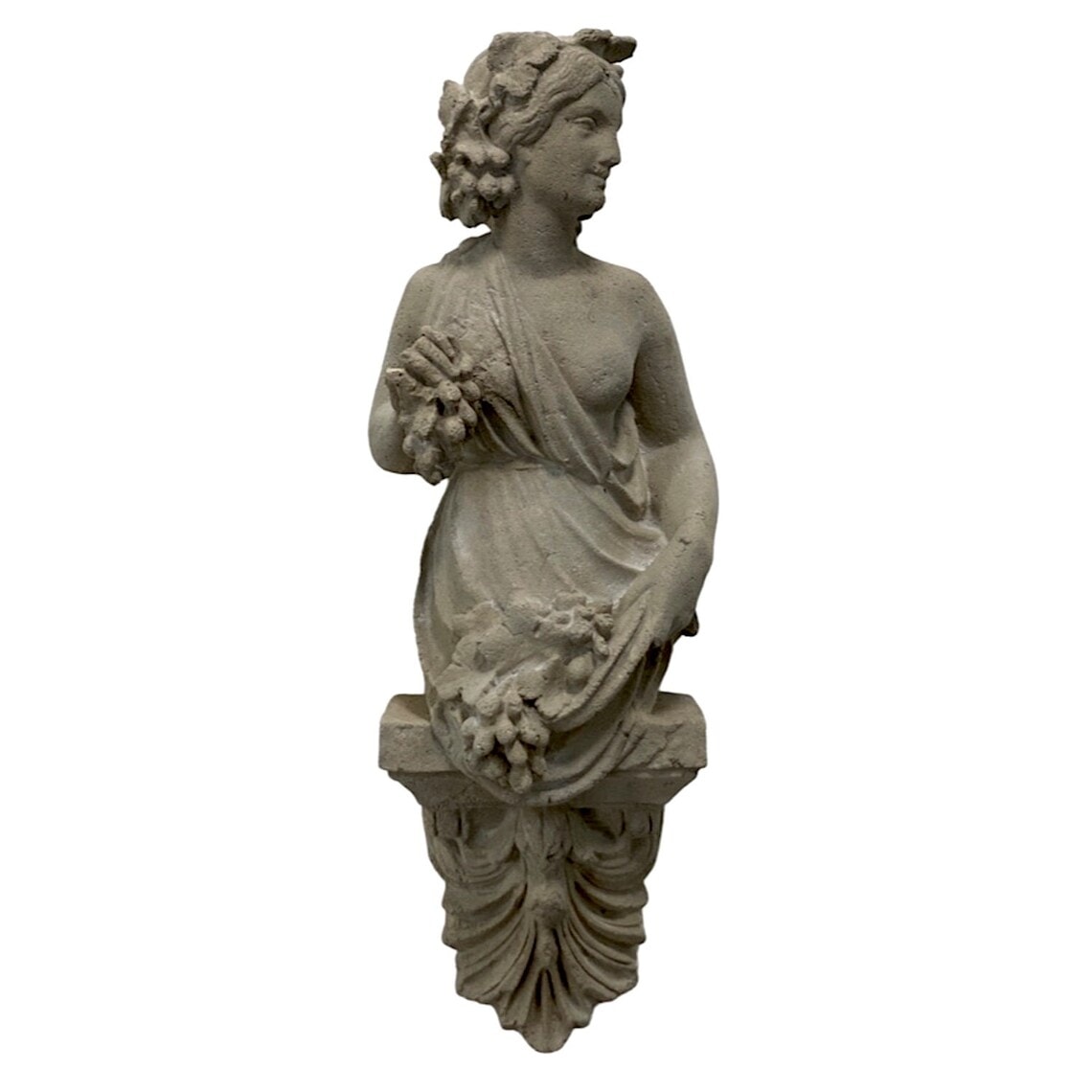
Amidst the many gods and goddesses of Roman mythology, Pomona stands out as a protector of the fruitful bounty. This wood nymph was one of the Numia, a guardian spirit tasked with the responsibility of watching over people, places, or homes. Her specialty lies in the cultivation and care of fruit trees, as she’s closely associated with orchards and gardens.
But Pomona is more than just an agricultural deity. She embodies the very essence of the flourishing of fruit trees, and her name is derived from the Latin word “pomum,” meaning fruit. In artistic depictions, she is often portrayed holding a cornucopia overflowing with ripe, juicy fruit or a tray of blossoming produce.
Apart from her expertise in pruning and grafting, Pomona is also renowned for her stunning beauty, which attracted the attention of many suitors, including the woodland gods Silvanus and Picus. But don’t be fooled, as this goddess was fiercely devoted to her orchard and preferred to be left alone to care for and nurture her trees.
Who is Vertumnus?
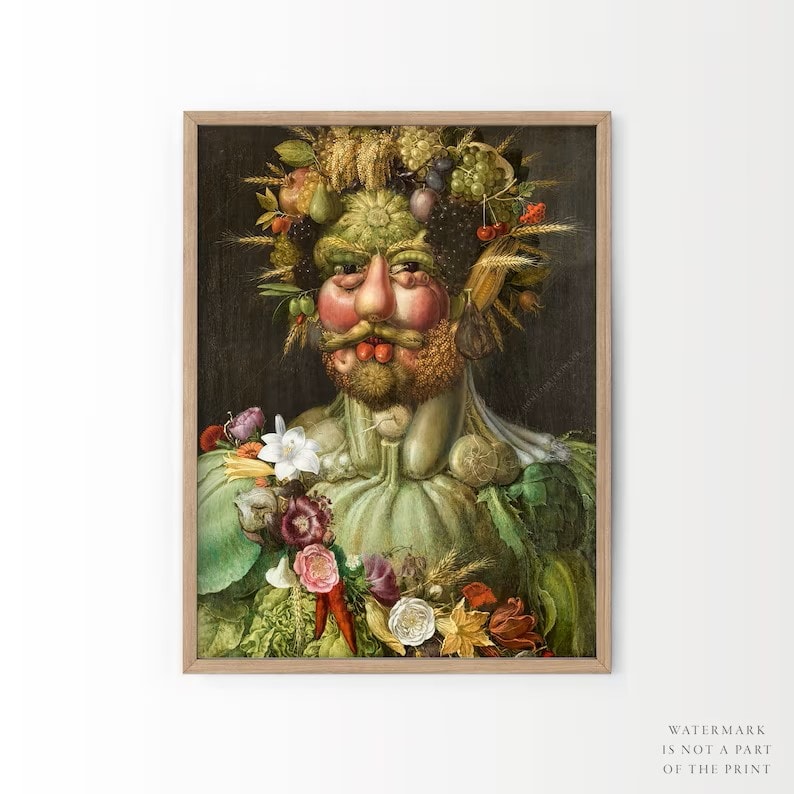
Vertumnus is believed to be originally an Etruscan divinity whose worship was introduced to Rome by an ancient Vulsinian colony. However, some scholars have challenged this story, suggesting that his worship may have been of Sabine origin instead.
His name is derived from the Latin word “verto,” meaning “change” or “metamorphose.” While the Romans attributed him with all occurrences related to “verto”, his true association was with the transformation of plants, particularly their progression from blossom to fruit-bearing.
As such, Vertumnus was known as the god of metamorphosis, growth, and plant life. He was mainly credited with the changing of the seasons, which was a crucial aspect of agriculture in ancient Rome, as well as with the cultivation of gardens and orchards. Because of this, he is celebrated by the Roman people every August 23 in a festival called the Vortumnalia, which marks the transition from autumn to winter.
Aside from these, Vertumnus was believed to have the power to change the color of leaves and to promote the growth of fruit trees. He was also a shapeshifter who had the ability to transform himself into different forms.
The Myth of Pomona and Vertumnus
Pomona was a Roman goddess and wood nymph who watched over gardens and orchards and was the guardian of fruitful abundance. She was known for her expertise in pruning and grafting, as well as her beauty, which caught the attention of many suitors. Despite their advances, Pomona preferred to be alone to care for and nurture her trees, with no desire for love or passion.
Vertumnus’ Deception
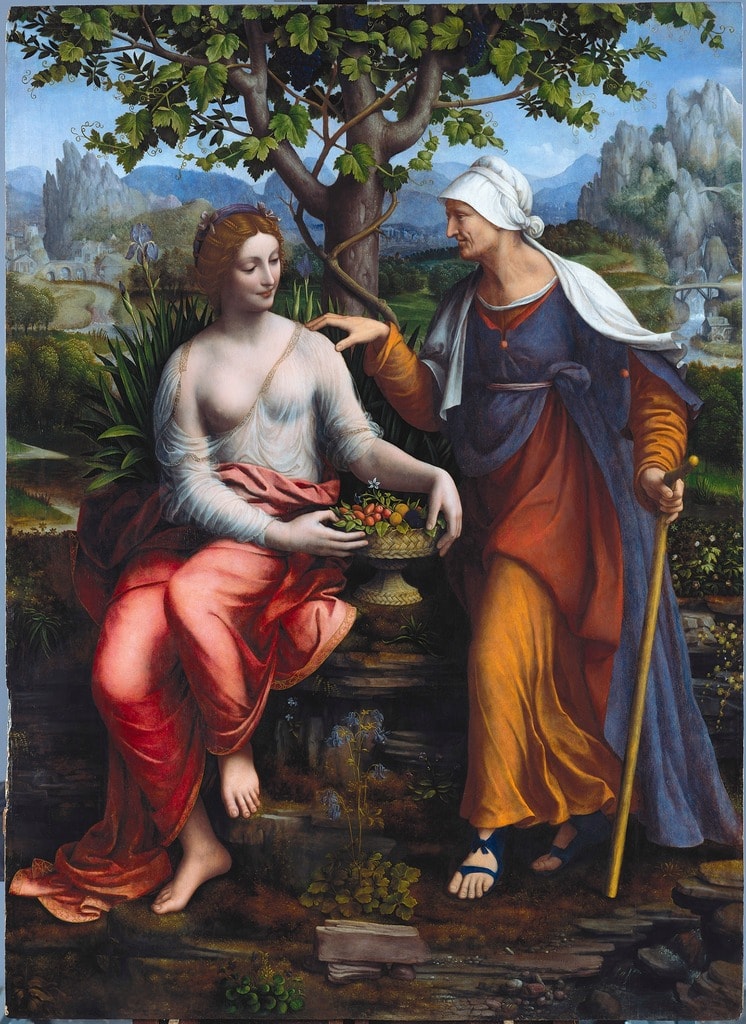
Vertumnus, a god of the changing seasons, fell in love with Pomona at first sight, but his attempts to woo her were in vain. Determined to win her heart, he shapeshifted into different disguises in order to be near her, including a fisherman, farmer, and shepherd, but all his attempts failed.
In a desperate attempt to gain Pomona’s affection, Vertumnus disguised himself as an old woman and drew Pomona’s attention to a grapevine climbing up a tree. He compared the grapevine’s need for a tree to support it to Pomona’s need for a mate, and implied that she should accept his pursuit or face the wrath of Venus, the goddess of love.
Pomona’s Rejection
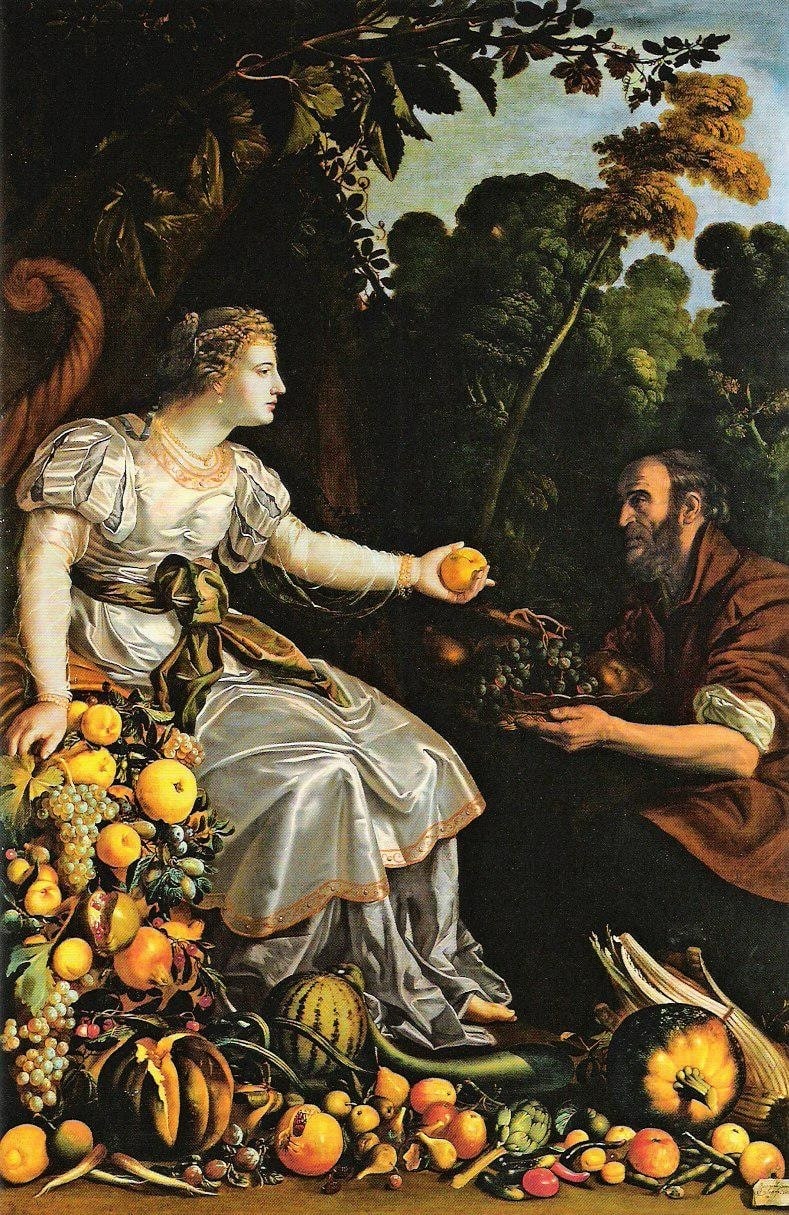
Pomona remained unmoved by the old woman’s words and refused to give in to Vertumnus’ advances. The disguised god then shared a story of a heartless woman who rejected her suitor to the point of his suicide, only to be turned to stone by Venus. The old woman’s story was likely a warning to Pomona about the consequences of rejecting a suitor.
Vertumnus’ True Form
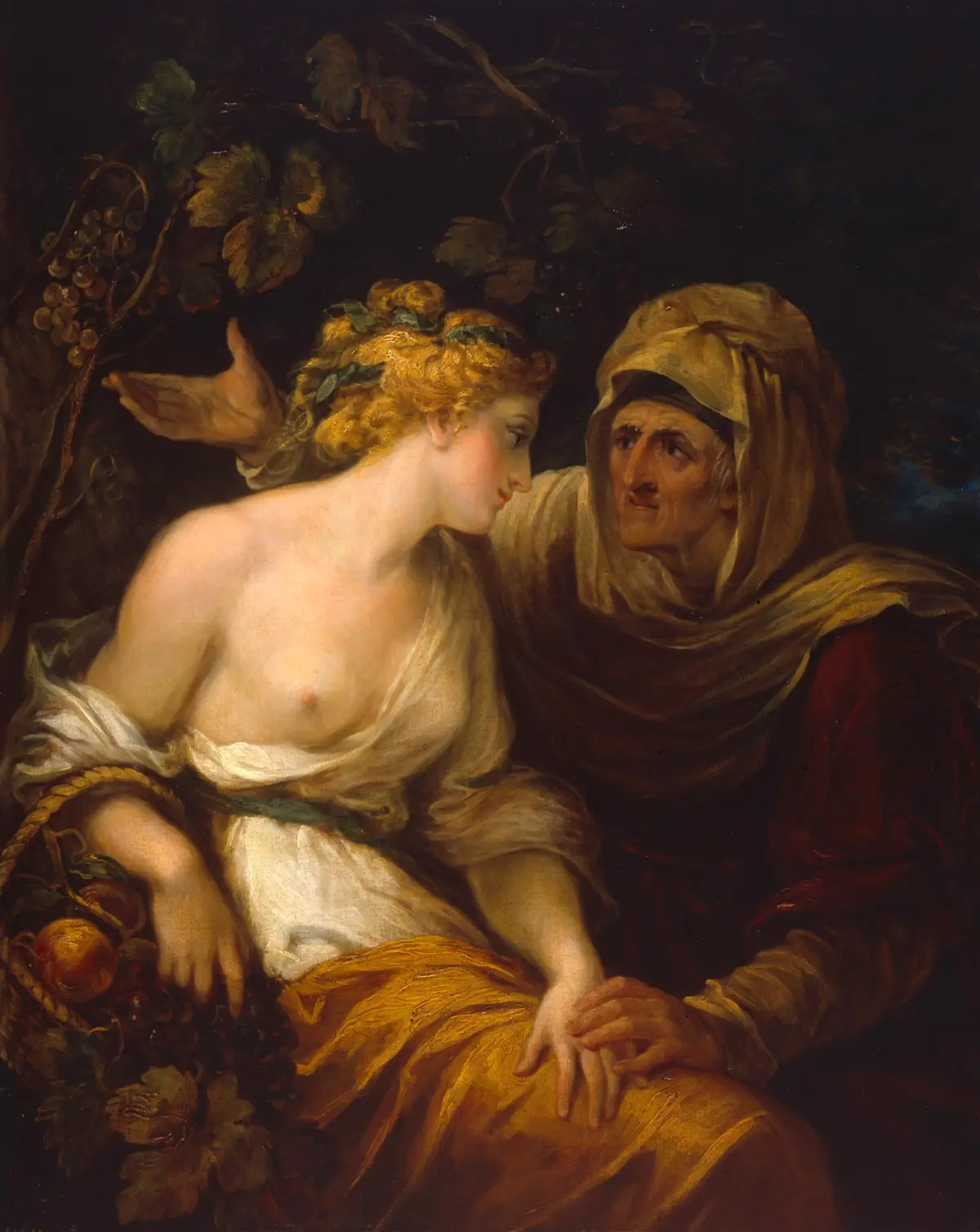
Finally, in desperation, Vertumnus threw off his disguise and revealed his true form to Pomona, standing naked before her. His handsome form won her heart, and they embraced, spending the rest of their lives tending to fruit trees together.
Pomona and Vertumnus’ love for each other grew stronger each day, and their orchards and gardens flourished under their care. They became a symbol of the fruitful abundance that their love had brought forth, and their legacy lived on in the tales told of their love and dedication to the land.
Alternate Versions of the Myth
There are alternate versions of the myth of Pomona and Vertumnus, each with its own unique twists and turns. Ovid’s version of the story, which is the most well-known, tells the tale of Pomona, a beautiful nymph who spent her days tending to her fruit trees in her orchard, and Vertumnus, a handsome god who fell deeply in love with her.
1. In Tibullus’ Version
In one alternate version of the story, told by the Roman poet Tibullus, Vertumnus visits Pomona in the guise of an old woman and attempts to persuade her to fall in love with him. The old woman tells Pomona a story about a young man named Iphis, who hanged himself after being rejected by his beloved Anaxarete.
In response to his death, Venus turned Anaxarete to stone for her heartlessness. The old woman then warns Pomona about the dangers of rejecting a suitor and advises her to open her heart to Vertumnus.
2. In Ovid’s Version
In another alternate version, told by the Roman poet Ovid in his “Fasti,” Vertumnus disguises himself as an old woman and visits Pomona’s orchard. He praises her fruit trees and suggests that they are a reflection of her own beauty.
The old woman then tells Pomona a story about a man named Iphis who, after being rejected by the woman he loved, was transformed into a woman by the goddess Isis so that he could be with her. The old woman implies that Pomona should be more open-minded about the idea of love and that Vertumnus might be the perfect match for her.
3. Other Versions of the Myth
Interestingly, in some versions of the story, Vertumnus is not initially successful in wooing Pomona and resorts to shapeshifting into various disguises in order to gain her attention. In one such version, told by the Roman poet Propertius, Vertumnus transforms into a ploughman, a reaper, and a grape-picker in order to be near Pomona.
Regardless of the version, however, the story of Pomona and Vertumnus remains a timeless tale of love, perseverance, and transformation, and continues to capture the imaginations of readers and storytellers alike.
Importance and Significance of the Myth
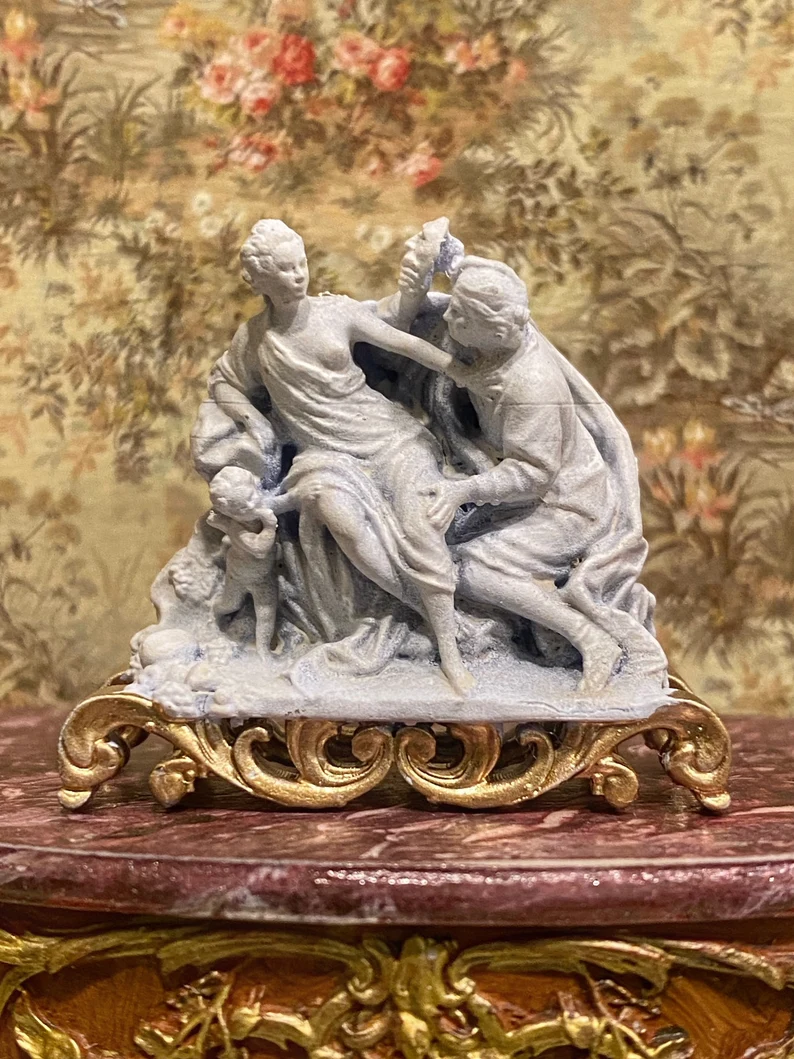
In Roman mythology, the gods were powerful beings who could reward or punish mortals based on their actions. The myth of Pomona and Vertumnus tells a cautionary tale of the consequences of rejecting love and refusing to honor the gods, particularly Venus, the goddess of love and fertility. It also highlights the importance of nature and the cultivation of crops, vital aspects of ancient Roman society.
The story can be interpreted in various ways, such as a tale of the triumph of true love, the importance of virtue, or a metaphor for the pursuit of desire. However, it also has an explicitly erotic subtext, which some interpret as a story of seduction and deception. Vertumnus’ use of deceit to win over Pomona raises questions about consent and agency in relationships with significant power imbalances.
Despite the minor characters in Roman mythology, the story has been popular among European artists, designers, and playwrights since the Renaissance. They have explored themes of love, desire, and virtue and depicted scenes of nudity and sensuality. Some visual representations of the myth present a significant gap in social status and age between the characters, suggesting power imbalances and raising questions about consent.
Ultimately, the myth of Pomona and Vertumnus remains a compelling story of the complexities of love, desire, and power.
The Myth in Modern Culture
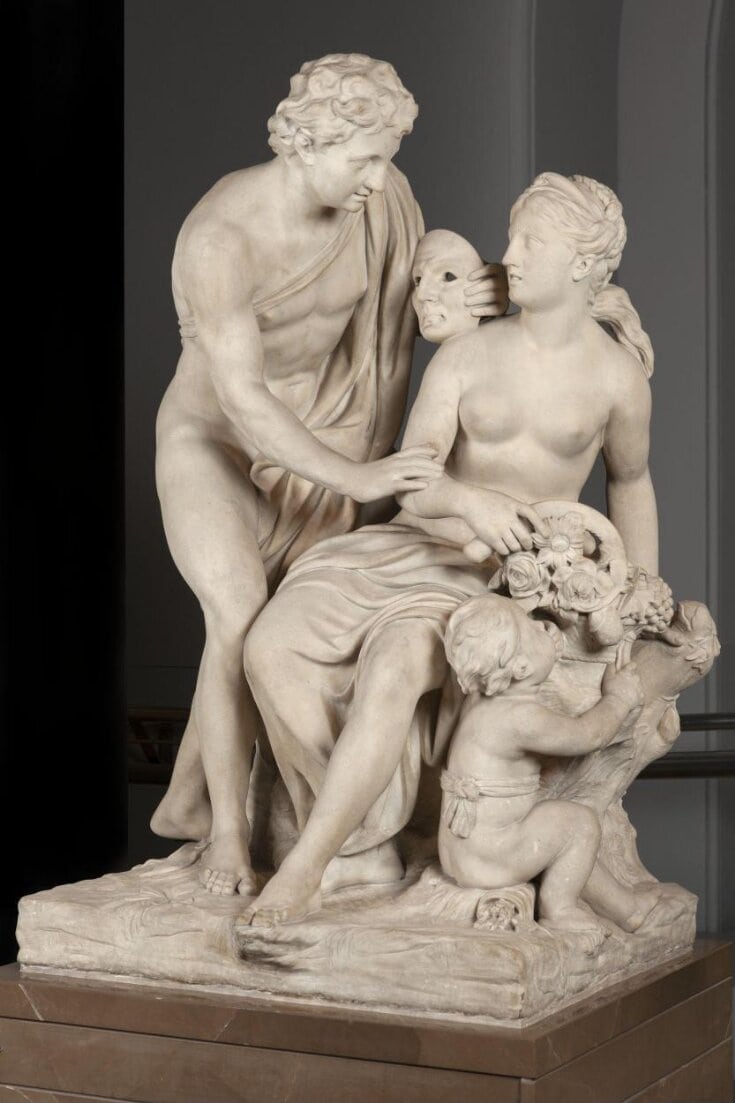
The myth of Vertumnus and Pomona has significantly impacted popular culture throughout history and has been retold in various forms, including literature, art, and opera. It has been a popular subject for artists and writers throughout history, often focusing on the themes of seduction and deception, but sometimes adapted to fit different cultural contexts.
In literature, the story of Pomona and Vertumnus has been referenced in works such as John Milton’s book “Comus” and William Shakespeare’s play “The Tempest”. In opera, the myth was included in several plays featuring Ovid’s Metamorphoses.
One of these is the long-running play “Metamorphoses”, written and directed by American playwright Mary Zimmerman, which was adapted from an early version of the play, Six Myths, produced in 1996 at the Northwestern University Theater and Interpretation Center.
Meanwhile, in the world of art, the story of Pomona and Vertumnus has been depicted in paintings and sculptures by artists such as Peter Paul Rubens, Cesar van Everdingen, and François Boucher. Many of these artworks depict the sensual and erotic aspects of the myth, as well as the natural beauty of the setting.
The myth has also been referenced in popular culture outside of the arts. One example is the Harry Potter series, which includes Pomona Sprout as a professor of Herbology at Hogwarts School of Witchcraft and Wizardry. She worked as Head of Hufflepuff House and Head of the Herbology department, while also handling some classes where she teaches Harry and his classmates about the properties of various magical plants.
Wrapping Up
Roman mythology played a significant role in the lives of the ancient Romans, shaping their beliefs, values, and understanding of the world around them. Today, it continues to be studied and appreciated as an essential part of ancient history and culture.
The myth of Vertumnus and Pomona has been a popular subject for artists and writers over the years, with many interpretations focusing on its undercurrents of deception and seduction. Some also see it as a story highlighting the power of love, while others believe it’s a warning about the consequences of scorning the gods.




